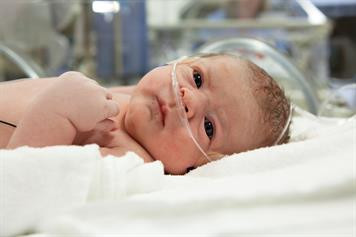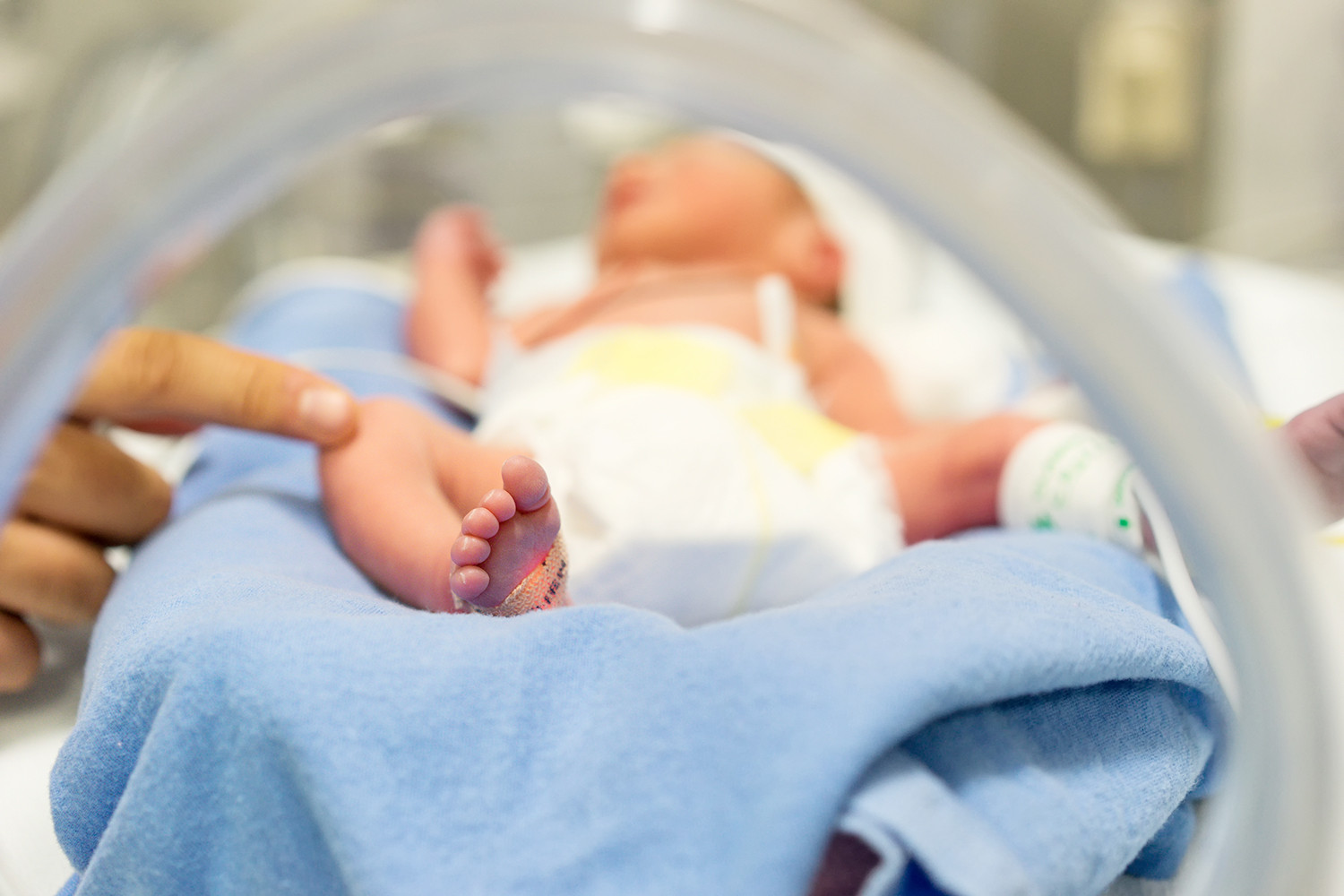Definisi
Ketuban Pecah Dini (KPD) atau premature rupture of membrane (PROM) adalah kondisi pecahnya selaput ketuban sebelum persalinan dimulai.
Ketuban pecah dini dapat terjadi pada atau setelah usia kehamilan 37 minggu dan disebut KPD cukup bulan. Sedangkan, bila ketuban pecah dini terjadi sebelum usia kehamilan 37 minggu, maka dapat disebut dengan KPD prematur atau premature preterm rupture of membranes (PPROM).
Di Indonesia, masalah KPD cukup sering terjadi dan menjadi masalah yang kejadiannya cukup tinggi. Kejadian KPD sekitar 6,46-15,6% pada kehamilan dengan usia cukup bulan.
KPD merupakan penyebab utama peningkatan angka kematian dan kesakitan pada bayi. Selain itu, Angka Kematian Ibu (AKI) dan Angka Kematian Bayi (AKB) di Indonesia masih merupakan masalah kesehatan dan merupakan salah satu yang tertinggi di negara Asia Tenggara.
Akibat yang ditimbulkan oleh ketuban pecah dini bukan hanya masalah dari sisi kedokteran jangka pendek ataupun jangka panjang, namun juga berdampak terhadap masalah ekonomi. Maka dari itu, KPD merupakan salah satu kasus yang membutuhkan perhatian lebih besar.
Sedangkan kejadian KPD di seluruh dunia dapat mencapai 8% dari total kehamilan di seluruh dunia. Dan lebih banyak terjadi pada etnis afrika-amerika.
Penyebab
Pecahnya selaput ketuban mendekati akhir dari masa kehamilan dapat disebabkan karena sifat alami dari selaput ketuban atau akibat dari proses kontraksi yang terjadi.
Namun, beberapa ilmuwan mengatakan bahwa terjadinya KPD berhubungan dengan peningkatan jumlah sel radang dan interaksinya dengan selaput ketuban sehingga dapat meningkatkan tekanan dalam rahim dan menyebabkan ketuban pecah sebelum waktunya.
Faktor Risiko
Terdapat berbagai faktor risiko yang berhubungan dengan KPD. Diantaranya adalah sebagai berikut:
- Berkulit hitam atau memiliki keturunan dari etnis afrika
- Pasien dengan status sosioekonomi yang rendah
- Perokok
- Riwayat infeksi menular seksual
- Riwayat persalinan prematur
- Riwayat KPD pada kehamilan sebelumnya
- Riwayat adanya perdarahan pervaginam atau perdarahan melalui vagina
- Riwayat peregangan uterus yang berlebihan misalnya akibat kehamilan kembar
- Kehamilan multipel atau kembar
- Polihidramnion atau kadar cairan ketuban yang terlalu banyak
- Penurunan jumlah kolagen pada selaput ketuban
- Kekurangan nutrisi terhadap zat seng dan tembaga
- Indeks massa tubuh yang rendah
- Leher rahim atau serviks yang pendek
Gejala
Gejala dari KPD dapat berbeda pada setiap kasus, diantaranya adalah:
- Keluar cairan secara tiba-tiba dari vagina yang tidak dapat ditahan
- Basah pada bagian vagina atau celana dalam
- Terdapat cairan yang merembes atau bocor pada vagina
Terkadang, banyak orang yang sulit membedakan cairan ketuban dengan urine. Mudahnya, cairan ketuban seharusnya berwarna jernih, tidak berbau, dan tidak berbusa.
Diagnosis
Pada awal kedatangan, dokter akan melakukan penilaian pada ibu hamil yang mengalami KPD. Penilaian meliputi konfirmasi diagnosis, konfirmasi usia kehamilan dan posisi janin, serta penilaian keadaan ibu dan janin.
Anamnesis dan Pemeriksaan Fisik
Diagnosis KPD dapat ditegakkan melalui anamnesis atau wawancara medis dan pemeriksaan fisik dengan melihat adanya cairan ketuban yang keluar.
Pada anamnesis dokter akan menanyakan keluhan utama pasien, keluhan penyerta bila ada, konfirmasi dan usia kehamilan, serta adanya faktor risiko yang dialami pasien seperti yang sudah dijelaskan di atas.
Pada pemeriksaan fisik, dokter dapat menggunakan kertas lakmus untuk melihat kadar pH atau kadar keasaman pada cairan yang keluar dari vagina. Bila kertas lakmus berwarna merah berubah warna menjadi berwarna biru ketika terkena cairan, maka kemungkinan besar cairan tersebut adalah cairan ketuban.
Dokter juga dapat melakukan pemeriksaan langsung dengan menggunakan alat spekulum yang dimasukkan ke dalam vagina yang telah diberikan pelumas. Pada pemeriksaan ini, dokter akan melihat apakah adanya pembukaan mulut rahim, dan apakah adanya tali pusat atau bagian terbawah janin yang sudah turun ke vagina.
USG (Ultrasonografi)
Pemeriksaan USG digunakan untuk menilai cairan ketuban. Jika didapatkan jumlah cairan ketuban berkurang tanpa adanya kelainan pada ginjal janin atau tidak ada masalah lain pada janin, maka kecurigaan pecahnya ketuban sangat besar.
Pemeriksaan laboratorium
Pemeriksaan darah mungkin diperlukan untuk menegakkan diagnosis KPD. Dokter dapat merekomendasikan pemeriksaan darah jika terdapat kecurigaan adanya infeksi sebagai akibat terjadinya KPD. Dokter juga dapat mengambil sampel cairan vagina untuk menyingkirkan kemungkinan diagnosis lain.
Tata Laksana
Tata laksana dari KPD akan bergantung dengan usia kehamilan. Namun, prinsip utama dari penatalaksanaan KPD adalah untuk mengurangi angka kesakitan dan kematian pada ibu dan bayi. Hal ini berkaitan dengan proses kematangan organ janin.
Secara garis besar, terdapat dua manajemen dalam penatalaksanaan KPD, yakni:
- Tata laksana ekspektatif yakni tanpa tindakan untuk mempertahankan kehamilan yang biasanya dilakukan kepada ibu hamil dengan KPD pada usia kehamilan dibawah 24 minggu dan 24 minggu hingga 30 minggu
- Tata laksana aktif yang melibatkan proses persalinan yang biasanya dilakukan pada ibu hamil dengan KPD pada usia kehamilan 30 hingga 38 minggu
Pada kedua tata laksana tersebut, dokter dapat memberikan obat-obatan berupa antibiotik untuk mencegah terjadinya infeksi pada ibu dan janin.
Selain itu, dokter juga dapat memberikan terapi kortikosteroid untuk membantu pematangan paru pada janin. Tata laksana setiap ibu hamil akan berbeda tergantung kondisi ibu dan janin atau sesuai dengan dokter spesialis kandungan yang merawat.
Komplikasi
KPD dapat menyebabkan beberapa komplikasi. Baik itu komplikasi kepada ibu maupun janin. Diantaranya adalah sebagai berikut:
Komplikasi Ibu
Komplikasi pada ibu yang sering terjadi adalah infeksi intrauterin atau infeksi pada rahim. Infeksi dapat berupa endomyometritis (infeksi pada dinding rahim), ataupun korioamnionitis (infeksi pada selaput ketuban) yang dapat berujung kepada kondisi bernama sepsis.
Sepsis adalah kondisi ketika infeksi terjadi secara menyeluruh ke seluruh organ di dalam tubuh. Bila tidak ditangani dengan baik, sepsis juga dapat meningkatkan angka kematian ibu.
Selain itu, risiko tindakan operasi sesar juga meningkat. Komplikasi yang dapat terjadi pasca operasi antara lain, perdarahan, infeksi pasca operasi, ataupun kerusakan organ.
Baca juga mengenai infeksi selaput ketuban: Penyakit Korioamnionitis - Definisi, Penyebab, Gejala, dan Tata Laksana | AI Care (ai-care.id)
Komplikasi Janin
Komplikasi pada yang paling sering terjadi adalah persalinan yang berlangsung lebih awal. Selain itu, bila ketuban pecah dini terjadi sangat cepat, janin yang lahir hidup dapat mengalami beberapa kondisi seperti kompresi tali pusat, gangguan pernapasan bayi, gangguan saraf bayi, dan perdarahan pada otak.
Pencegahan
Sayangnya tidak ada cara khusus untuk mencegah kondisi ketuban pecah dini. Namun Anda dapat melakukan kontrol kehamilan secara rutin saat hamil agar bila Anda memiliki kondisi yang berisiko terjadinya KPD, dokter dapat memberikan penanganan yang sesuai dan tepat.
Membaca dan mencari tahu mengenai informasi KPD juga akan berguna untuk ibu hamil agar tidak panik dan mengetahui langkah apa yang harus dilakukan bila terjadi KPD.
Selain itu, ibu hamil harus memastikan kebutuhan cairan tercukupi dengan minum air putih minimal 2 liter per hari, membatasi konsumsi gula dan kafein, menghindari rokok dan alkohol, menjaga indeks massa tubuh supaya tetap ideal, dan minum suplemen atau vitamin sesuai anjuran dokter.
Kapan Harus ke Dokter?
Bila Anda sedang hamil dan adanya cairan yang keluar dari vagina tanpa bisa ditahan seperti buang air kecil, terutama jika Anda memiliki faktor risiko terjadinya KPD, segeralah pergi ke dokter terdekat untuk mendapatkan penanganan lebih lanjut.
Mau tahu informasi seputar penyakit lainnya? Cek di sini, ya!
- dr Nadia Opmalina
MedlinePlus - Premature Rupture of Membranes. (2020). Retrieved 17 October 2022, from https://medlineplus.gov/ency/patientinstructions/000512.htm
Medscape - Premature Rupture of Membranes. (2018). Retrieved 17 October 2022, from https://emedicine.medscape.com/article/261137-overview#a7
Pedoman Nasional Pelayanan Kedokteran (PNPK) Ketuban Pecah Dini - POGI. (2016). Retrieved 17 October 2022, from https://pogi.or.id/publish/download/pnpk-dan-ppk/
S. Dayal, PL. Hong, (2022). Premature Rupture of Membranes. Retrieved 17 October 2022, from https://www.ncbi.nlm.nih.gov/books/NBK532888/












